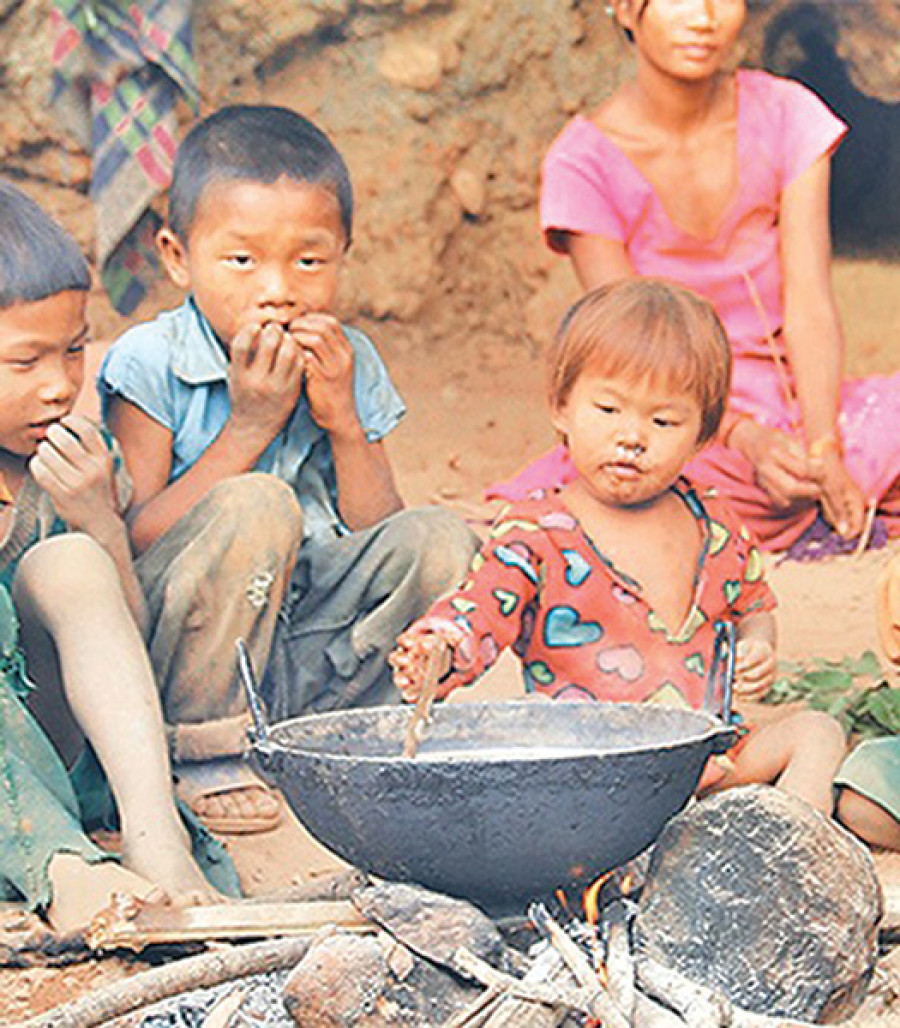Opinion
The starvelings
Malnutrition is an issue that warrants the attention of the government
Bhawana Upadhyay
A picture is worth a thousand words. The picture of an eight-months-old malnourished Sabita published recently in the front page of this paper tells the tale of a never ending challenge of child malnutrition. My first reaction to the picture was generic. Accusing government has been a common thing among us. But the issue of malnutrition is much bigger than that. It is the outcome of several factors including, migration, labor shortage, barren lands, food habits, gender bias, food and agricultural system, food inflation and inequality at large.
Current reality
The government surveys claim that Nepal has made a tremendous progress towards improving the health and survival of the children in the last 25 years. For example, stunting has reduced to half, falling to 36 percent in 2016. The International Food Policy Research Institute’s (IFPRI) report, Understanding the Rapid Reduction of Undernutrition in Nepal, 2001-2011, suggests that despite the social and political turmoil and high levels of inequality across the country’s social groups and regions, Nepal achieved reduced stunting prevalence by 1.8 points per year from 2001 to 2011.
Likewise, the under-five mortality rate has dropped significantly, from 142 per thousand live births in 1990 to 38 in 2014—making Nepal one of the countries to achieve one of the Millennium Development Goals i.e.– reducing child mortality by two thirds by 2015. Last year, Nepal proudly received the UN SUN global champion award for doingexemplary work in reducing malnutrition among women and children.
The government has maintained nutrition and food security as among its top priority and identified nutrition as one of the important agendas of national development. The first multi-sectoral nutrition plan was implemented in 28 districts in coordination with the National Planning Commission, which had programs and projects like Integrated Nutrition Program, SABAL project, Feed the Future, Farmers, Agriculture and Food Security etc. Likewise, UNICEF in coordination with its partners and local government, has been supporting the implementation of integrated early child development plan and is realigning with the new federal government structure for better results.
Though the first multi-sectoral nutrition plan helped achieve some positive changes in stunting, malnutrition remains a looming challenge. Government statistics show that some 25,000 children still die every year due to malnutrition.
The second multi-sectoral nutrition plan (2018-2022), which is an investment of 470 million US dollars, is going to be implemented in over 700 local units. Of the total budget, 60 percent comes from Nepal government as a strong commitment to reduce underweight problems among children and to provide equal access to special health and nutrition services to all.
Lingering around
Despite such coordinated efforts and investments, why is malnutrition still a major problem? Experts argue that vulnerability to nutritional deficiencies is intertwined with household food insecurity which starts very early in life. In fact it starts as early as the time of pregnancy. Not only the children below five years are under the risk of acute and severe malnutrition,
so are the adolescent pregnant and breastfeeding mothers.
Due to lack of proper nutrition during pregnancy, most of the babies born to these mothers are low- to underweight and are malnourished.
Studies have shown that malnutrition has a major effect on the world’s poorest and most marginalised, perpetuating gender inequality by affecting women more than men. The problem gets worse when the families of newborn are poor and have difficulty in making ends meet.
It doesn’t mean that the malnourished children cannot improve their conditions. The question is, do the families have adequate resources to feed them? There are cases of low weight born children improving their health condition with proper micronutrient intakes later if the family is able to afford such nutrient rich food.
Another factor that is affecting malnutrition is the continuing food inflation. Most food items have become twice as pricey compared to India. Undernutrition and malnutrition also have to do with Nepal’s agriculture and food system. Though nearly 70 percent of the country’s population is dependent on agriculture, we literally import everything from India and other parts of the world. The problem has been compounded over the past years as the fertile lands have started remaining barren with the increase in youth out-migration to the Gulf and other countries. With no home-grown grains, vegetables and fruits, families go for easier option such as instant noodles and biscuits.
Therefore, it is critical to reach out to the women and young girls of remote areas mobilizing local health volunteers with proper information on maternity health and children nutrition in close coordination with local units.
In addition to these services, government should call for partnerships with the private sector to invest on immediate food and nutrition related assistance, such as provision of ready to use therapeutic food, micronutrient powder, fortified food, etc.
Food inflation and new taxation law of provincial governments are additional factors affecting millions of us. Distributing subsidised agricultural inputs for high nutrient vegetables and fruits is a good strategic approach. Taxpayers would be relieved as well if they see that a part of tax paid by them is invested on good health of fellow country folks. But, until these problems are tackled at multiple levels, malnutrition will continue to plague us.
Upadhyay writes on contemporary social and sustainable development issues. @bhawy




 7.12°C Kathmandu
7.12°C Kathmandu










